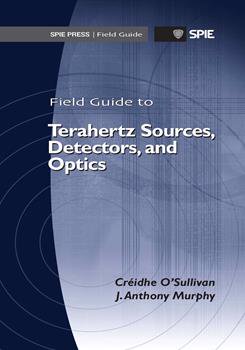
This will count as one of your downloads.
You will have access to both the presentation and article (if available).
The voltage-biased TES are read out with Time Domain Multiplexing and an unprecedented multiplexing (MUX) factor equal to 128. This MUX factor is reached with two-stage multiplexing: a traditional one exploiting Superconducting QUantum Interference Devices (SQUIDs) at 1K and a novel SiGe Application-Specific Integrated Circuit (ASIC) at 60 K. The former provides a MUX factor of 32, while the latter provides a further 4. Each TES array is composed of 256 detectors and read out with four modules of 32 SQUIDs and two ASICs. A custom software synchronizes and manages the readout and detector operation, while the TES are sampled at 780 Hz (100kHz/128 MUX rate).
In this work we present the experimental characterization of the QUBIC TES arrays and their multiplexing readout chain, including time constant, critical temperature, and noise properties.
The technical demonstrator is a scaled-down version of Module 1 in terms of the number of detectors, input horns and pulse tubes and a reduction in the diameter of the combiner mirrors and filters, but is otherwise similar. The demonstrator will be upgraded to the full module in 2019. In this paper we give an overview of the QUBIC project and instrument.
The full QUBIC instrument is described elsewhere1,2,3,4; in this paper we will concentrate in particular on simulations of the optical combiner (an off-axis Gregorian imager) and the feedhorn array. We model the optical performance of both the QUBIC full module and a scaled-down technological demonstrator which will be used to validate the full instrument design. Optical modelling is carried out using full vector physical optics with a combination of commercial and in-house software. In the high-frequency channel we must be careful to consider the higher-order modes that can be transmitted by the horn array. The instrument window function is used as a measure of performance and we investigate the effect of, for example, alignment and manufacturing tolerances, truncation by optical components and off-axis aberrations. We also report on laboratory tests carried on the QUBIC technological demonstrator in advance of deployment to the observing site in Argentina.
The beam from each feedhorn is passed through an optical combiner, with an off-axis compensated Gregorian design, to allow the generation of the synthetic image. The optical-combiner will operate in two frequency bands (150 and 220 GHz with 25% and 18.2 % bandwidth respectively) while cryogenically cooled TES bolometers provide the sensitivity required at the image plane.
The QUBIC Technical Demonstrator (TD), a proof of technology instrument that contains 64 input feed-horns, is currently being built and will be installed in the Alto Chorrillos region of Argentina. The plan is then for the full QUBIC instrument (400 feed-horns) to be deployed in Argentina and obtain cosmologically significant results.
In this paper we will examine the output of the manufactered feed-horns in comparison to the nominal design. We will show the results of optical modelling that has been performed in anticipation of alignment and calibration of the TD in Paris, in particular testing the validity of real laboratory environments. We show the output of large calibrator sources (50 ° full width haf max Gaussian beams) and the importance of accurate mirror definitions when modelling large beams. Finally we describe the tolerance on errors of the position and orientation of mirrors in the optical combiner.
Optical characterisation and analysis of multi-mode pixels for use in future far infrared telescopes
A novel method is proposed which has been used to aid with the design of an optical beam combiner for the QUBIC (Q and U Bolometric Interferometer for Cosmology) 1 experiment operating at 150 GHz and 220 GHz. The method combines calculation work in GRASP 2, a commercial physical optics modelling tool from TICRA, geometrical work in Mathematica, and post processing in MATLAB. Finally, the Python console of the open source package FreeCAD3 is exploited to realise the 3D beams in a complete CAD system-model of the QUBIC optical beam combiner.
This paper details and explains the work carried out to reach the goal and presents some graphics of the outcome. 3D representations of beams from some back-to-back input horns of the QUBIC instrument are shown within the CAD model. Beams of the -3dB and -13dB contour envelope are shown as well as envelopes enclosing 80% and 95% of the power of the beam. The ability to see these beams in situ with all the other elements of the combiner such as mirrors, cold stop, beam splitter and cryostat widows etc. greatly simplified the design for these elements and facilitated communication of element dimension and location between different subgroups within the QUBIC group.
This will count as one of your downloads.
You will have access to both the presentation and article (if available).
View contact details
No SPIE Account? Create one


